What Makes a Street Art Festival Authentic?
A Manifesto, sort of 😅 Also: I'm back at Vlogging, can you believe it?
Ciao,
how are you?
I kicked off May in Madrid, exploring the city with some readers of this newsletter. From poignant murals to contemporary art museums in former factories, and from studio visits to food markets, we covered the city extensively, even venturing to Zaragoza for our last day of street art hunting.
Traveling together, meeting in real life, sharing laughs, and enjoying delicious vegetarian paellas added a special touch to the journey—both the literal journey and my blogging journey. These moments of connection have shown me that what I do here on this side of the screen truly becomes meaningful through our shared experiences.
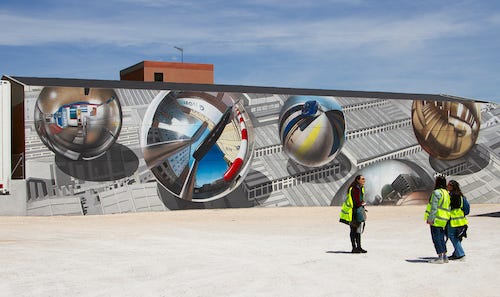
Inspired by
and , I decided to start vlogging again! I haven’t posted any video in the last couple of years, so if you are new to my Youtube channel, you might need to subscribe and turn on the notifications.Then, enjoy this little intro to the Festival Season 2024 Youtube Playlist, which will showcase the best street art festivals around 😉 Stay tuned!
I had hoped to announce also the release of the Paris book in this newsletter, but unfortunately, we're not there yet. The self-publishing journey has proven to be more challenging and expensive than anticipated. As you know, I'm a perfectionist and I want to create a book that truly deserves your money.
This will be an actual art book, featuring stunning photography, creative graphics, and captivating insights from local street artists. Since I couldn't settle for "just" a guidebook, there's a bit more of a wait. But rest assured, it will be worth it.
Now, let's jump into this month's theme, which I've been working on for a couple of months. I wanted to share it in the May 1st newsletter, but life happened and I had a tough family situation to deal with. So, I had to push it to this month, and, of course, the content has expanded quite a bit (you know me, I have a lot to say about this topic).
Let's get into it!
What Makes a Street Art Festival Authentic?
I opened BLocal blog in 2011. Back then, street art was illegal, rebellious, and unsanctioned. It was unpredictable, something you’d stumble upon in the street. Often, it was anonymous, sparking my curiosity about the artists and their motivations. This wonder indeed led me to open the blog, where I could research these artists and share their stories with fellow street art enthusiasts.
I was writing about street art when few others were, and it felt like my own private paradise, inhabited by just a handful of kindred spirits: artists with truly groundbreaking visions, curators who could shape all that raw energy without diluting it, and people who loved to do things with a DIY mentality. It was a world far removed from mainstream events and white-cube exhibitions.
Fast forward ten years, and my idyllic island has been overrun by content creators who treat street art as just a colorful backdrop for their selfies. Curators now invite influencers to press events who know nothing about the culture, and it pains me deeply to see their superficial handling of something so intertwined with my life. Newspapers assign interviews, and even publishing houses give book deals to Instagrammers, hoping their huge followings will boost sales. Meanwhile, I’ve spent over a decade passionately communicating and educating about graffiti and street art, only to watch others seek fame on paths painstakingly forged by myself and other early advocates.
Yet, the issue here isn't my frustration or crises over feeling “not enough” (because, if I were enough, they would have called me for that job, panel, press event, or book deal). The issue is that this transformation has ruined the street art scene, drowning authentic street art in a sea of superficial spectacles that merely capitalize on the trend.
Sorry for the long introduction, but it was necessary to set the stage.
Now, let's delve into what makes a street art festival genuine amidst all the noise and spectacle.
The influx of people attending festivals just to take photos has led many organizers to commission murals that look good in those photos. These colorful, eye-catching murals, often painted by artists chosen for their large Instagram followings, are designed to attract a broader, more superficial audience.
This has resulted in a "Disneyfication1" of street art culture, something I refuse to be part of. I carefully choose which festivals to work with each summer and invest time and energy in sharing my perspective, like in this lengthy newsletter 😅, to help you identify which festivals and organizations remain authentic and which are merely exploiting the street art scene for profit.
A good street art festival should encourage artists to work outside traditional frameworks and support spontaneous, unplanned art creation in spaces that are not pre-designated or heavily curated. It’s crucial to support smaller, human-scale street art practices that engage directly with urban spaces and communities, accommodating various styles and techniques.
Another essential aspect is integration with the cultural context of the host city. I appreciate the formula of ‘art residencies,’ which allows artists to truly connect with the hosting community, as opposed to ‘fast festivals’ where artists stay only a few days and end up painting their usual works regardless of the location.
(To make matters worse, these ‘signature pieces’ are favored by algorithms that love repetition of format and even the same color palette within a social media feed. That’s why some artists use the same colors regardless of the context, prioritizing brand consistency over creating an artwork that harmonizes with the surrounding landscape).
Good festivals avoid complicity with city developers and gentrification projects that use street art to increase property values. They ensure that art remains a tool for genuine expression rather than a commercial commodity, and they use public spaces in ways that consider the needs and desires of residents, preventing a sense of alienation.
Good festivals preserve the activist spirit of street art amidst growing commercialization. They offer platforms for critical discourse, supporting experimental and provocative works that challenge societal norms and provoke thought. Maintaining the revolutionary potential of street art is essential, achieved by inspiring art that addresses social issues and promotes activism. This stands in contrast to photorealistic portraits of celebrities or superficial murals of colorful flowers and birds, which merely capitalize on social media appeal.
To wrap up, I encourage you to dive into previous issues of this newsletter where I have explored this topic, although these reflections are a constant thread throughout all my writing here on Substack and, honestly, you can find them in any post. 😉
I'd love to hear your thoughts on this topic. Feel free to reply to this newsletter and let me know which street art festivals you plan to attend this summer.
Let's keep the conversation going!
Until next month,
Giulia
ps. On June 7th, I'll be discussing a similar topic on a panel of street art experts at Trame Festival (Grosseto, June 6th - 8th). If you happen to be in Tuscany, I'd love to see a familiar face in the audience! The talk starts at 7:30 PM at Molino Hub. For more information about the festival, follow @collettivoclan.
Save the date(s)
Explore London with me: August 23rd - 27th (early bird offer until July 22nd)
Next Street Art Trip > Athens, October 11th - 14th
New on the blog!
Uncovering Villaverde: The Best-Kept Secret of Street Art in Madrid.
Not even locals know about the many urban art gems you can find in Villaverde, one of the city’s 21 districts. From the 1950s to the 1980s, Villaverde thrived as an important industrial hub. Today, the district boasts a blend of residential areas, industrial zones, commercial spaces, and green areas.
Exploring Zaragoza Through the Murals of Festival Asalto.
As one of the oldest street art festivals in Europe and the oldest in Spain, the festival Asalto continues to transform the city’s public spaces with murals and street installations. In this article, I reveal the story behind the murals we saw on our day trip to Zaragoza.
Discover MAUF: Fuenlabrada Urban Art Museum
The Museo de Arte Urbano de Fuenlabrada (MAUF) isn’t an actual museum. Instead, it’s an urban art project initiated by Madrid’s street art pioneer Suso33, and then carried on by the municipality of Fuenlabrada, a city just south of Madrid. Featuring a diverse collection of large-scale murals by both local and international artists, MAUF has become a regional focal point for urban art.
From the Heart of Covilhã: Announcing the Media Partnership with the WOOL Festival.
I’ve had the WOOL Urban Art Festival on my radar for a long time, and this year, I’m thrilled to announce that I’ve become the media partner for this highly respected street art festival, the first of its kind in Portugal.
I'll visit Covilhã soon after the festival to provide an in-depth report on its impact. My goal is to showcase how the festival revitalizes the village, strengthens community identity, reclaims public spaces, fosters pride, and enriches Covilhã's cultural fabric.
Stuff I write when I’m not here
ITALY MAGAZINE - “Forget One Euro Homes. It’s Street Art Festivals’ Turn To Revive Italian Villages.”
I rely on the support of readers like you to keep creating genuine and informative content. If you value my work and would like to see more of it, please consider making a donation to support my writing and my editorial project BLocal.
You can Buy me Pizzas or Donate via Paypal.
If you are currently unable to make a donation but find this newsletter and my street art travel guides in general interesting, you can help grow this community by forwarding this email to anyone you like, or sharing this publication on your social channels.
When festivals prioritize large-scale, sanitized murals that appeal to tourists and commercial interests, they strip away the raw, edgy character of street art, reducing it to a form of entertainment devoid of its original activist and rebellious spirit. As far as I know, this term was first coined by Nuart’s curator Martyn Reed, one of the genuinely authentic curators out there.





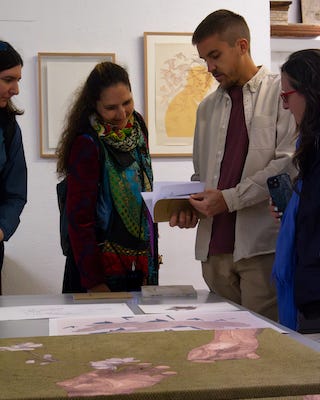
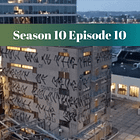
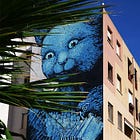
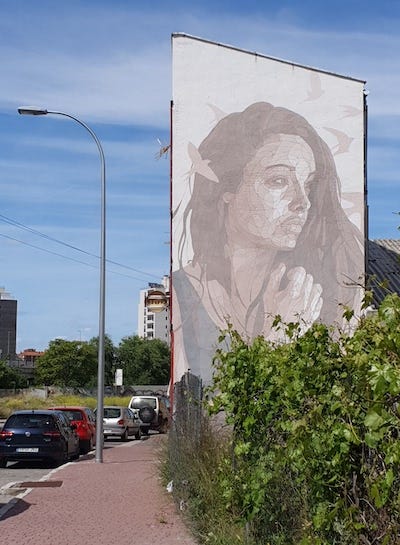
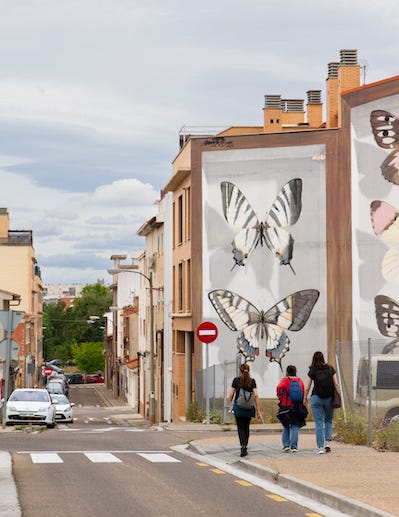
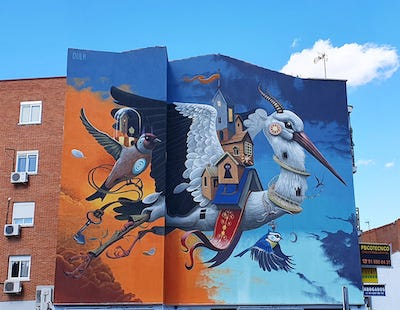
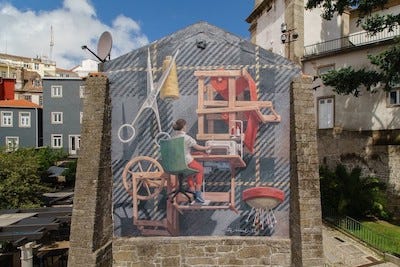
Ciao! You missed Leicester in UK, it was conducted by @bring_the_paint and I think had all the elements of being authentic. Please check it out.